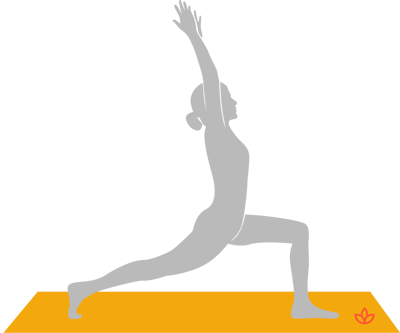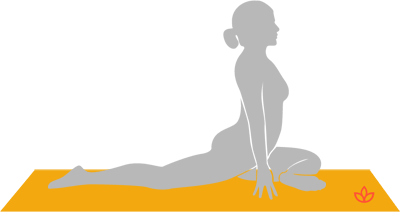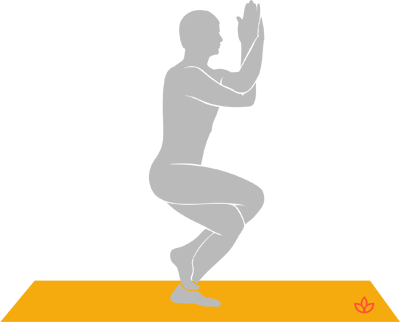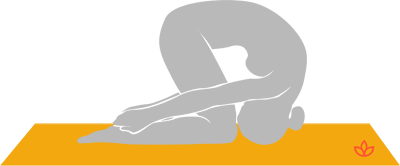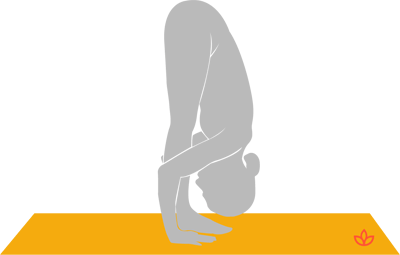Most of us have habitual movements and holding patterns in our body that are activated when we experience stress.
For some people, their shoulders tense or their jaw tightens. Others get knots in their stomach or clench their firsts.
Stress manifests itself physically in different ways for different people. In and of itself, there’s no real problem with that; in fact, it's a natural response. Our bodies are designed to experience stress and stimulation, to react to it and, finally, to recover from it.
Email Newsletter
Subscribe and get the stories about the greater change that comes from yoga.
Chronic stress occurs when our bodies don't get the opportunity to recover. This happens when the stress we experience is so frequent that our bodies become locked in reactive patterns and our muscles don’t release.
After a while the stress becomes trapped in our body.
The long-term impact of chronic stress and tension can be serious. Among other things, it can lead to a lowered immune response, insomnia and a compromised digestive system. It is very unpleasant to experience the aches and pains that come with chronic muscular tension.
If you feel like your body is holding on to stress, the following techniques and poses can help you unlock the secret to releasing it.
5 Yogic Techniques to Unlock Stress:
1. Awareness
The first step to unlocking the body’s habitual stress patterns is through awareness.
To start, try practicing this awareness on your yoga mat. As you move into each new asana, begin by scanning your body.
Learn to identify which muscles you need to engage to hold yourself in a pose and which you do not. Purposefully and gently, allow the muscles you don't need to let go.
Once you’ve practiced releasing these areas on your yoga mat, it becomes easier to do the same off the mat.
Read: Discovering Yourself Through a Body Scan Meditation
2. Stretching
When muscles are habitually contracted, stretching is a great way to lengthen them and help them let go of their stored tension.
Choose yoga poses which target tense areas, holding the stretch until you feel a physical and mental release. Mindfully stay with it so you consciously notice and remember how it feels to release that tension.
Read: 4 Twists to Drain Away Your Stress and Tension
3. Breathing
It’s not just our muscles that hold on to tension. Our breathing patterns can sustain, and even exacerbate the stress in our bodies.
Generally, when we feel stressed, our breathing becomes shallower, sometimes faster and often, more erratic.
Slow, deep, complete breaths are your friend. With every exhale, visualize yourself releasing tension. On every inhale bring in fresh energy, life and calm.
Read: How to Release Anxiety Using Breath
4. Movement
Moving your body in different and new ways is a great way to break habitual stress patterns and release tension. One way to do this is through a dynamic, vinyasa flow.
Read: A Vinyasa Sequence for Beginners
Alternately, try taking a dance break to your favorite tunes. Moving your body in any way that feels good is a fantastic way to release tension.
5. Stillness
In Yin yoga, poses are held for sustained periods of time without much muscular effort. This can be more difficult that it sounds.
When you move into a deep stretch in part of the body that holds a lot of tension - for example, the hips - you notice the way that your body resists this release.
Even when you are consciously relaxing specific muscles, you may notice that the way your body holds stress is not static. When muscles are habitually tense, they will repeatedly try to contract again.
The key is to remain in the stillness of the pose. Each time you feel tension creeping back in, consciously let it go with the breath. As you ride the waves of your breathing you find release from your holding patterns.
Read: Yin Yoga: 4 Benefits of Surrendering to Your Yoga Mat
Yoga Poses to Unlock Stress
Release the Psoas
The psoas muscle is a deep hip flexor muscle that may become continually contracted when the body is under chronic stress.
Releasing this muscle can have a profound effect on how you feel physically and emotionally. Postures that help stretch the psoas include:
Read: 5 Yoga Poses to Release Tight Hips
Relax the Neck and Shoulders
Many of us hold our tension in our neck and shoulders. Great poses for releasing this are:
Fold Forward
Deep forward folds help not only to release tension in the back of the body, but also activate your parasympathetic nervous system (PNS). This is exactly what your stressed body needs.
The parasympathetic nervous system regulates your blood pressure, lowers your heart rate and, crucial for unlocking stress, tells your muscles to relax.
Chronic Stress Relief
Following these simple strategies can have a profound effect on your physical and mental well-being. By taking the time to unlock the stress you are holding on to, you may even avoid years of chronic health problems.
Yoga can be your magic weapon in finding freedom and release.
During These Times of Stress and Uncertainty Your Doshas May Be Unbalanced.
To help you bring attention to your doshas and to identify what your predominant dosha is, we created the following quiz.
Try not to stress over every question, but simply answer based off your intuition. After all, you know yourself better than anyone else.
